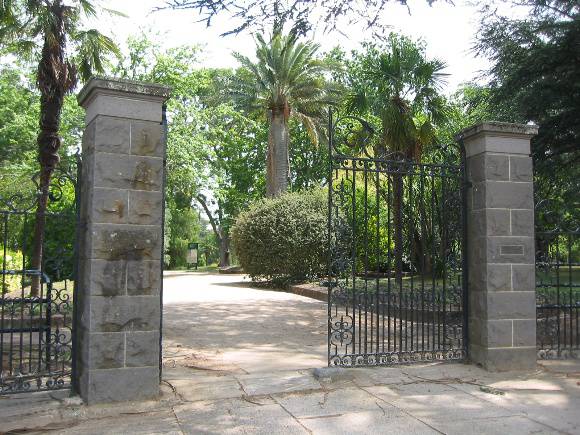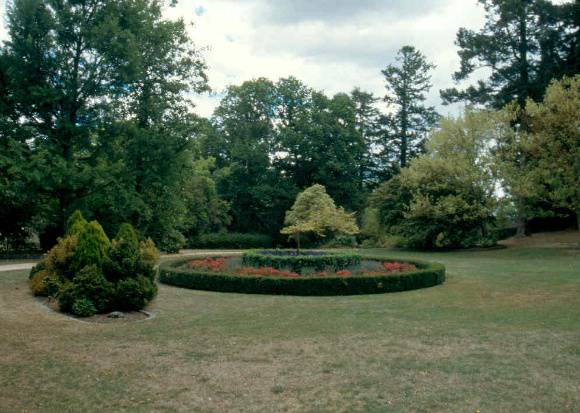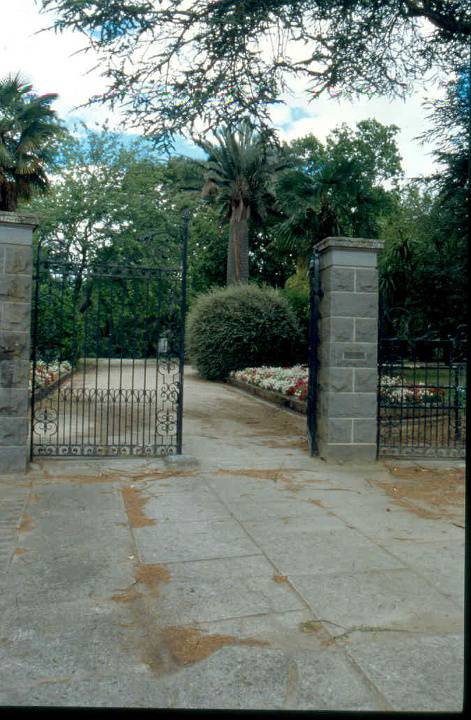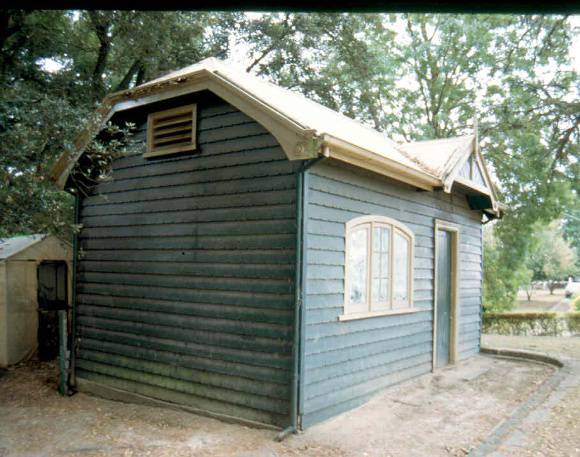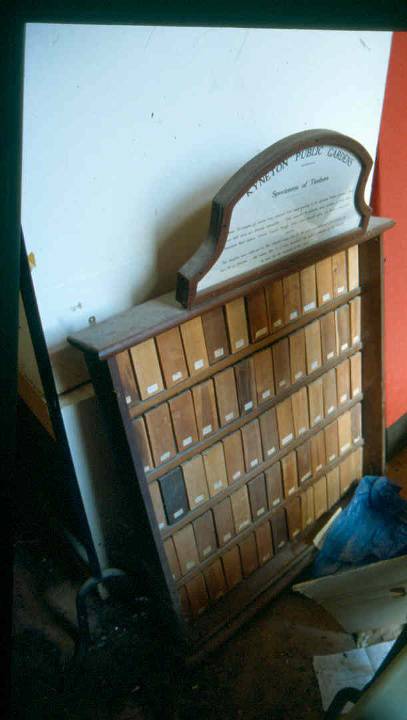| Back to search results » | Back to search page » |
|
KYNETON BOTANIC GARDENS
Other NameKYNETON BOTANICAL GARDENS LocationMOLLISON STREET AND CLOWES STREET KYNETON, MACEDON RANGES SHIRE
File Number600962LevelRegistered |
|
Statement of Significance
What is significant? The upper level of the Kyneton Botanic Gardens, known as the Kyneton
Public Gardens, is formally laid out with garden beds and mature
trees, and features an 1880 bluestone wall, the 1936 commemorative
entrance gates, c1900 gardener's office,1902 drinking fountain, c1905
rotunda, a shelter and two bluestone memorial pillars marking the
entrance to McKenna Drive. The gardens contain a fine collection of
mature trees including elms, firs, cedars, sequoias and a collection
of outstanding and rare oaks. The middle section now contains a
caravan park, introduced into the reserve in 1959, and the lower level
contains specimen trees, a fernery, English Hawthorn hedges along the
river, an oval and a pavilion relocated from the Kyneton saleyards
during the 1970s. Edward Gray, who had been employed there as a gardener for fifty
years and was appointed curator from 1906 to c1909, prepared a display
board inlaid with specimens of timber taken from seventy of the six
hundred trees then growing in the Kyneton Public Gardens. The specimen
board was given to the Kyneton Council by his widow in trust for the
residents of the State. Amongst the samples displayed are some taken
from an American Red Cedar and from a Chinese Cypress. This specimen
board is at present located in the former Congregational Sunday School
(now the Kyneton Arts Centre). How is it significant? Why is it significant? The Kyneton Botanic Gardens are of aesthetic significance for their
setting, on an undulating site sloping down to the Campaspe River, for
the collection of significant plants, with mature trees of contrasting
forms and colours, for the pinetum, for the fernery, and for the
garden structures, including the bluestone wall, the entrance gates,
the gardener's office, the rotunda, the drinking fountain, two
memorial pillars, the shelter and for the contrast between the formal
and informal areas. A prominent and unusual design feature is the
large "Oak Circle", bordered by a privet, japonica and
hawthorn hedge encircling rare oaks, and the single and double
Hawthorn hedges lining the Gardens boundary along the Campaspe River. The Kyneton Botanic Gardens are of scientific (botanical)
significance for their collection of plants, especially the oaks and
conifers, characteristic of late nineteenth century Victorian gardens,
and including some rare and outstanding individual specimens such as
Araucaria bidwillii, Abies nordmanniana, Cedrus
atlantica f. glauca, Chamaecyparis funebris, two
Quercus agrifolia, 1863 Quercus canariensis, Quercus
leucotricophora, Quercus macrocarpa var. olivaefolius, 1902
Quercus robur, 3 Quercus suber, Quercus robur
'Concordia', Crataegus coccinoides, Quercus ilex, Juniperus
oxycedrus, Prunus lusitanica 'Variegata', Cupressus
lusitanica, Ginkgo biloba, Pinus wallichiana, Sequoia sempervirens,
and Sequoiadendron giganteum. The planting includes
Victoria's only known Quercus douglasii, and Victoria's
largest and finest Jubaea chilensis, a palm now threatened in
the wild. In the "Oak circle" is a rare Quercus alba,
grafted onto Q. robur, Quercus canariensis x Q.
robur, Quercus castaneifolia (hybrid), Quercus
palustris, and 2 stumps of other grafted oaks.
The Kyneton Botanic Gardens, originally of
18 acres, was temporarily reserved for a Botanic Gardens in August
1858, replacing the 2.5 acres reserved in March 1858 next to the
Mechanics Institute, which was considered inadequate by the Council. A
further 3 acres was reserved in 1884, then an additional 5 acres in
1902, and more land from the closure of the road reserve was added to
the Gardens in 1903, to give a total area of about 24 acres. The
Gardens are situated on the banks of the Campaspe River between the
railway station and the centre of the town. In 1861 Mr Stuart Murrray,
a local engineer, surveyor and architect, won a prize of £15 for his
design for the gardens. Murray went on to design the Goulburn Weir and
Victoria's early irrigation schemes. One of the first events to take
place in the Gardens was the planting of three trees, including an
Algerian Oak planted by Cr Jarrett on 19 May 1863 and dedicated to
Queen Victoria, which still grows near the Ebden Street entrance. The
first plants were provided by the community and during the 1870s more
were obtained from Ferdinand von Mueller of the Melbourne Botanic
Gardens.
The Kyneton Botanic Gardens are of
historical, scientific, and aesthetic significance to the State of Victoria.
The Kyneton Botanic Gardens, established in
1858 soon after the discovery of gold in 1851, are historically
significant as one of the earliest regional botanic garden established
in Victoria. They are associated with the post-gold rush history of
Victoria, when towns which had grown as a result of the gold
discoveries aspired to becoming major provincial cities, with art
galleries, botanic gardens, mechanics institutes and other cultural
institutions befitting their status. Botanic Gardens had been
established in Melbourne in 1846, Portland and Geelong in 1851, White
Hills in 1854, Williamstown in 1856 and at Ballarat, Malmsbury and
Hamilton in 1857.
Group
Parks, Gardens and Trees
Category
Garden Botanic


